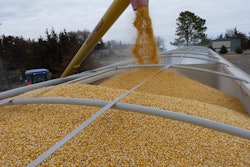
In early October, the United States and 11 other Pacific Rim nations — Australia, Brunei Darussalam, Canada, Chile, Japan, Malaysia, Mexico, New Zealand, Peru, Singapore and Vietnam — reached final agreement on the landmark Trans-Pacific Partnership (TPP) trade agreement. The full text of the agreement was then released to Congress, and the public, in early November.
TPP是有史以来最大的区域贸易协定,comprising nearly 40% of the world’s economy. It is expected to increase world incomes, which in turn, will increase the demand for U.S. agricultural products across the board. According to the U.S. Department of Agriculture (USDA), TPP countries accounted for 42% of U.S. agricultural exports in 2014, contributing $63 billion to the U.S. economy. Economists suggest that the TPP agreement could expand U.S. agricultural exports by billions of dollars. During the negotiations, key sectors of U.S. agriculture urged the U.S. Trade Representative (USTR) to secure increased market access to the TPP countries for exports of their products. This was particularly true for Japan, currently the third-largest export market for U.S. agricultural products, who entered the TPP negotiations in May 2013.
Key trade barriers lifted
Japan has agreed to lower or phase out tariffs on most U.S. products. Tariffs on soybean meal of 4.2% will be eliminated immediately. Tariffs on soybean oil as high as 13.2 yen/kilogram will be eliminated within six years. For beef products, most tariffs will be phased out in 16 years — tariffs for fresh, chilled or frozen beef will be phased down from 38.5% to 9%. For pork, most tariffs will be phased out over 11 to 16 years, in addition to a reduction in the mandatory gate price specific duty from 482 yen/kg to 50 yen/ kg over 11 years. For dairy, cheese tariffs will be eliminated in 16 years and whey tariffs in 21 years, and Japan will create quotas for several dairy products. Japan will establish a new duty-free quota of 50,000 tons for U.S. rice, which will grow to 70,000 tons in 13 years.
Some U.S. agricultural exports, including corn and wheat, are already duty-free into many TPP countries under existing free trade agreements. However, the agreement will lift a number of trade barriers in these other TPP countries. The following are some highlights for key sectors of U.S. agriculture in the other TPP countries:
- Corn: In Vietnam, tariffs as high as 30% will be eliminated in four to seven years.
- Soybeans: Tariffs as high as 30% in Vietnam will be eliminated within 11 years; and all tariffs will be eliminated immediately in Malaysia and Brunei.
- Wheat: Tariffs as high as 35% in Vietnam will be eliminated within four years; and all tariffs in Malaysia and Brunei will be eliminated immediately.
Notably, the agreement also includes provisions that will improve sanitary and phyto-sanitary (SPS) measures to establish and preserve stability in the global trade of commodities and food products. TPP is also the first trade agreement to include a chapter on regulatory coherence, which emphasizes good regulatory practice among TPP countries, coordination among regulators and fact-based decisions. The regulatory coherence and SPS chapters do a number of things helpful to the food and agriculture industry:
- Provides that SPS measures be based on science and that individual countries’ regulations are consistent with World Trade Organization (WTO) obligations
- 限制进口认证要求rictly SPS issues and commits TPP countries to base import checks on the actual risk of the import
- Allows countries to take emergency measures they deem necessary to protect food safety and public health, but requires that the scientific basis be disclosed
- Establishes a consultative mechanism to find science-based solutions to SPS issues and a dispute settlement mechanism to enforce such SPS commitments
- Promotes transparency by including commitments from TPP countries to incorporate public comment on proposed SPS measures, similar to the U.S. rule-making process
Congressional outlook
The approval and implementation process for the TPP agreement is set out in the Trade Promotion Authority (TPA) legislation that Congress passed earlier this year. TPA is a grant of authority to the President to negotiate trade agreements according to congressional directives, and allows for the trade agreements to be passed by simple majorities in Congress, without the possibility of amendment. The process requires the President to notify Congress of his intention to sign the agreement at least 90 days before doing so, which he did on Nov. 5.
Given the timeline, the earliest the President could sign the agreement is roughly Feb. 3. Once he does so, the President must submit to Congress the final text which he and the other TPP countries signed.
This must be done 30 days before he submits to Congress a bill that would implement the agreement. The timing for the introduction of the implementing legislation is at the complete discretion of the President. Once it is introduced, Congress has a maximum of 90 legislative days to consider the legislation. Legislative days are days in which Congress is in session, not in recess. If and when the legislation is approved by Congress, the President then takes the final step of implementing the agreement by issuing a presidential proclamation.
It will be months from now before Congress acts on the trade agreement, due to the timing and process mentioned above, and also to a host of other variables. These include the timing of the introduction of implementing legislation, the existing congressional calendar, and the notion that other pressing issues may arise at any time. Congressional approval of TPP in 2016 will be difficult, particularly since the presidential election season has already begun in earnest and early primaries will take place around the time TPP could be brought up in the Congress.
In addition to the normal tendency of Congress to lose focus on legislative activities as an election draws closer, the political climate is even more partisan and negative than it has been with previous trade agreements.
In the Democratic race for President, front-runner, former Secretary of State Hillary Clinton is opposed to approval of TPP although she earlier supported TPP when she served as secretary of state. Bernie Sanders, Democratic presidential candidate, is strongly opposed to TPP, and the leader of the polls in the Republican race, Donald Trump, has been very vocal about President Obama’s failure to negotiate successfully with other countries, particularly on trade.
Only 28 House Democrats voted for TPA this past summer, and perhaps even less will be inclined to vote for TPP during election season, particularly if the candidates battling for the top of their ticket are opposed to it. Congressional approval of TPP will require disproportionate numbers of Republicans, and though a large majority of Republicans are likely inclined to vote for the agreement, a growing number may opt not to vote for an agreement negotiated by the Obama Administration.
Several members of Congress critical to gaining approval have voiced their opposition to major provisions in the TPP agreement.
Senate Finance Committee Chairman Orrin Hatch (R-UT) is reported to be concerned with the provisions that dramatically shorten the time period for intellectual property right protection for biologic drugs.
Senate Majority Leader McConnell and other tobacco-state senators are unhappy with tobacco being excluded from Investor State Dispute Settlement (ISDS) provisions, which otherwise would have protected tobacco against new laws or regulations in TPP countries.
House Agriculture Committee Chairman Conaway is also concerned about the provisions on dairy, rice and sugar.
Moving forward
Clearly, there is much to be gained for U.S. agriculture from Congressional approval and the implementation of this trade agreement. Beyond satisfaction or dissatisfaction with the agreement itself, there are a number of challenges that are strictly political in nature.
A national election with its high-level politics and negative statements on initiatives of the Obama Administration, such as this, will complicate the path forward. The later the timeline slips into 2016 and past spring, the greater the likelihood Congressional consideration is pushed back either into a lame-duck session of Congress following the 2016 elections, or even into a new Presidential Administration in 2017. Indeed, two high-level congressional staffers recently stated in a public appearance their belief that a TPP vote would have to wait until after the November 2016 elections.
Nonetheless, President Obama is expected to continue to make this a priority in his final year in office, and will work to secure support from those who helped pass TPA. Furthermore, trade groups representing U.S. agriculture and key sectors have been evaluating the merits of the agreement and most have stated their support for early passage. The path forward is murky, to be sure, but not impossible. U.S. agriculture has a role to play, and much to be gained.




















